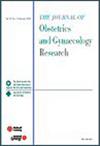Temporal Trends and Determinants of Low-Dose Estrogen-Progestin Prescription in Japan During 2014–2022: An Ecological Study Using a Nationwide Claims Database
Abstract
Aim
This study aimed to evaluate the trends and regional disparities in low-dose estrogen-progestin (LEP) prescription in Japan from 2014 to 2022 and the factors contributing to these disparities.
Methods
LEP prescription data were obtained from the National Health Insurance Claims and Specific Health Examination Database; the prescriptions per 1000 women aged 10–54 years were calculated. Trends were analyzed in terms of the overall volume, age group distribution, and formulation type. The regional distribution in 2022 was also examined; the factors influencing regional differences were identified using multiple regression analysis.
Results
LEP prescriptions showed a significant annual increase (p < 0.05), rising approximately five-fold over 9 years. A significant increase was observed in all age groups, except for those in their 50s (p < 0.05). Ethinylestradiol 0.035 mg/norethisterone 1 mg (p < 0.005) and ethinylestradiol 0.02 mg/drospirenone 3 mg (cyclic dosing regimen) (p < 0.001) usage declined. Conversely, ethinylestradiol 0.02 mg/drospirenone 3 mg (continuous dosing regimen) and ethinylestradiol 0.02 mg/levonorgestrel 0.09 mg usage increased significantly (p < 0.05). In 2022, regional disparities in LEP prescriptions reached a maximum of 2.7-fold. These disparities were not associated with the number of obstetricians and gynecologists and women's health specialists. However, the prescription of EE 0.02 mg/drospirenone 3 mg (continuous dosing regimen) showed a significant association with the number of women's health specialists (p = 0.002).
Conclusion
This study provides the first comprehensive analysis of real-world LEP prescription patterns in Japan, revealing significant regional disparities.

 求助内容:
求助内容: 应助结果提醒方式:
应助结果提醒方式:


